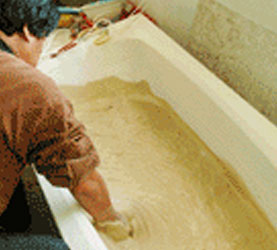Glazing
After the biscuit firing, enamels are applied on the celadon, which is called glazing. It is not an exaggeration to say that the biscuit firing was the ground work more glazing.
There are various methods for glazing such as soaking, brushing, and spraying, but soaking is the most commonly used method since it can guarantee uniform application of the enamel. For large products that is difficult to glaze, the enamel could simply be poured from above.
Celadon should be soaked in water just before glazing because moisture prevents thick glazing, instant air bubbles, and peeling.

Enamels are glassy powders that are applied thinly on the surface of potteries to give the shine, color, and pattern. They are used for the purpose of utility, beauty, and insulation. The main purposes are to improve the solidity of containers, sanitation, and convenience. Also, enamels give aesthetic effects. A potter could define their unique methods by choosing and utilizing enamels. Thus an average celadon could turn into excellent works according to how the maker uses enamels.
Enamels used at Gangjin Celadon Workshops are natural enamels invented locally. We don't use any iron oxide or chrome frequently used by other kilns as coloring agent.The kiln office uses feldspar which contains irons as basic material and add other elements such as burnt plant ashes (rich in calcium) and limestone to ease dissolving. But this method is merely a basic guide.
Enamels are the fundamental element for a good product, but this doesn't mean that a good enamel guarantees good product.

